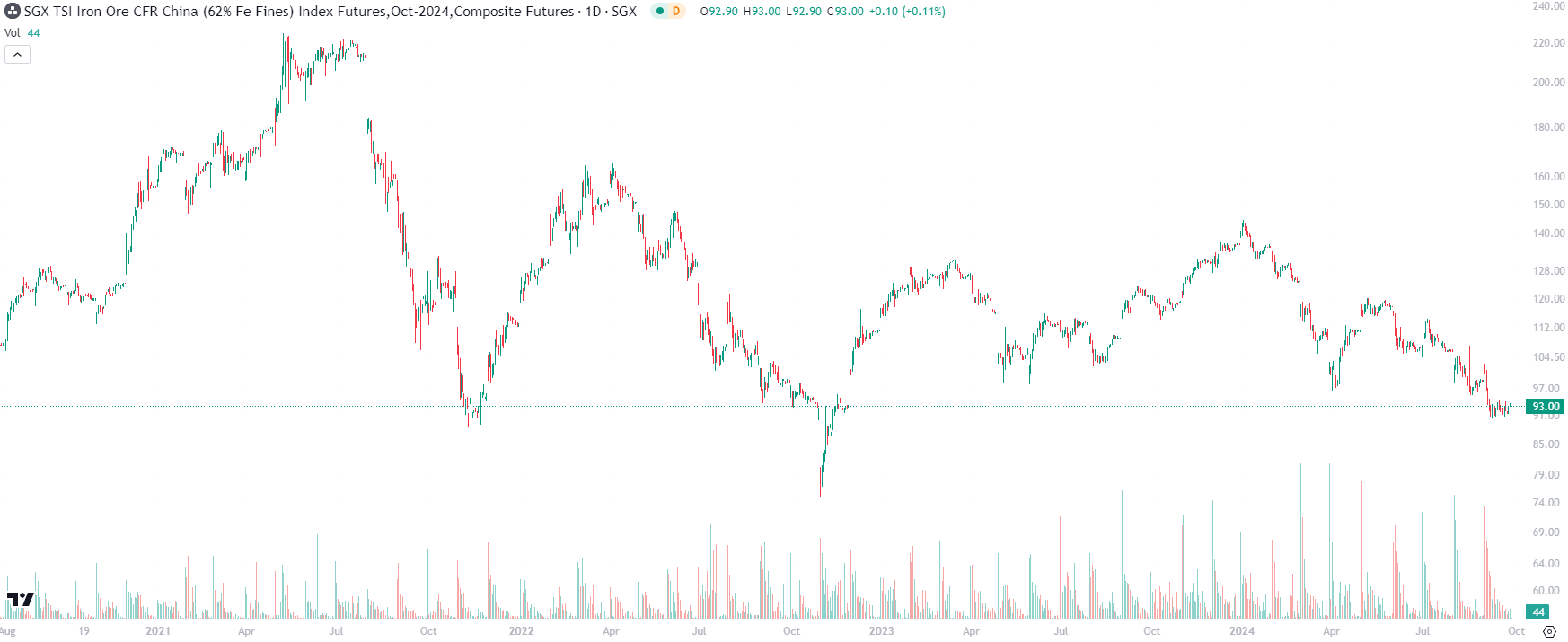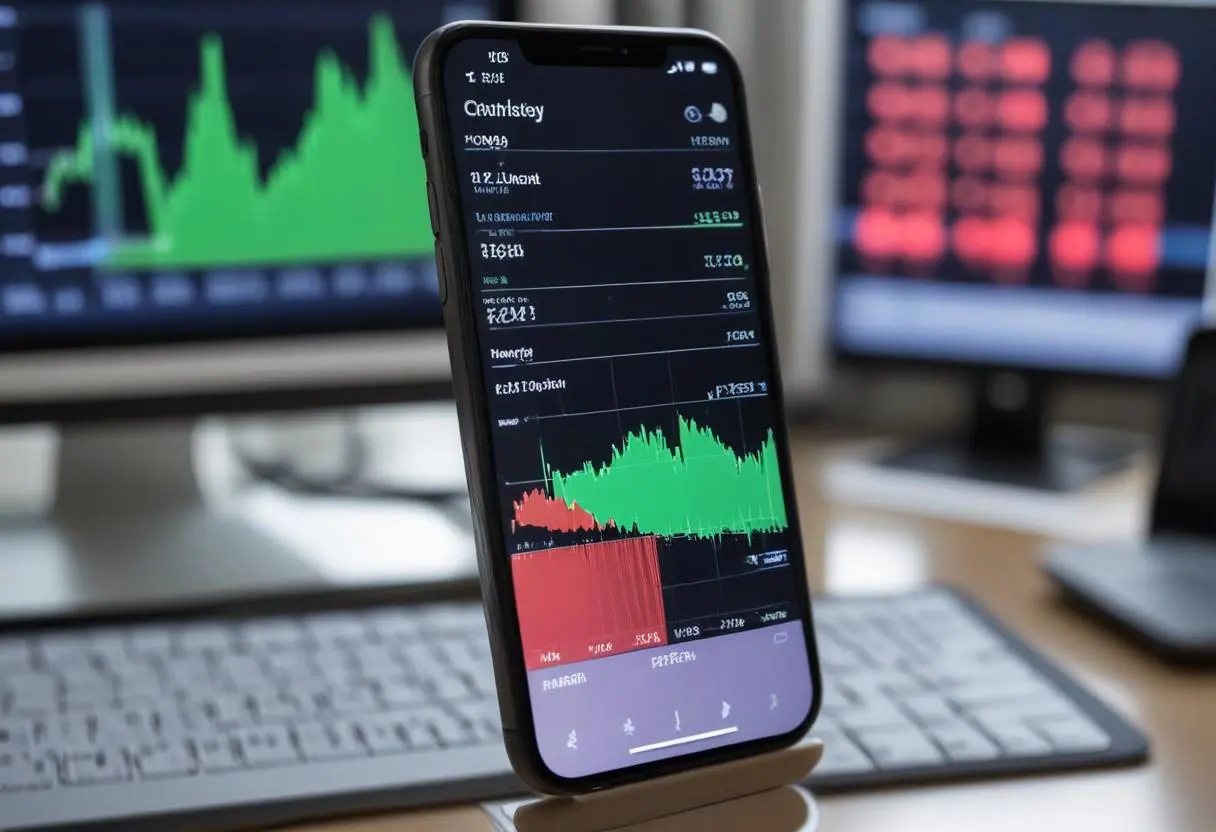Iron Ore Price Forecast 2025: Is Iron Ore a Good Investment?
![]() Ujjwal Maheshwari, September 25, 2024
Ujjwal Maheshwari, September 25, 2024
The Iron Ore Price Forecast is probably the most watched price forecast of any commodity in Australia. This is because iron ore has been important to Australia. It is the main raw material used for the production of steel as well as the primary commodity in the world economy. This has particularly been the case with China, and countries like Fortescue (ASX:FMG) have made a fortune from it.
The country consumes more than half of all iron ore produced worldwide, and for that reason, it is still a key player in defining global prices. The construction and infrastructure sectors do most of their work on steel, and these are the key consumers of iron ore. The recent demand connected to the global economic recovery has not been able to arm iron ore prices with the flexibility of fluctuations based on the state of the Chinese economy or based on changes in policies.
Throughout the previous years, there have been great iron ore price volatilities experienced with iron ore, mostly moving with demand from China, but with occasional movements from disasters impacting particularly large deposited around the world.
It goes without saying that the 2021 highs in iron ore prices are long gone, but there is uncertainty as to where iron ore might be headed next with conflicting signals from the market. On one hand, iron ore demand from China is falling. The other, many high-cost mines are shutting down and if there is not enough supply, prices will go up.
This article provides an all-inclusive forecast of iron ore prices in 2025 and questions whether it stays a strong investment option in the long duration.
Current Market Overview of Iron Ore Prices
Since mid-2021, iron ore prices have been mostly downward as demand in China waned off in conjunction with falling stimulus and construction activity. New construction starts fell 39% in 2022, then another 21% in 2023 and a further 24% in the first half of 2024.
The falling prices leave many mills unprofitable and unwilling to buy iron ore, causing some to close and others to dump their iron ore on global markets at cheap prices. In August, a Mysteel survey reported only 5% of steel mills in China were profitable. So natural demand-supply dynamics should mean that prices fall enough so that players can get back into the market? Well, they haven’t fallen enough yet – at least not in the eyes of many analysts including from CBA, Goldman Sachs and Bank of America. There has been stimulus from China and it has not been enough to send iron ore prices higher, but sufficient to ensure prices do not fall through the floor to COVID pandemic lows.

Iron ore prices (Singapore futures), log scale (Source: TradingView)
Iron Ore Price Forecast for 2025
Global Economic Conditions and Demand for Iron Ore
Global economics should be a big influencer of iron ore price in the years that lie ahead. Economies such as India and Southeast Asia are going to invest more into infra and drive demand for steel and iron ore. However, slower-than-expected growth in developed economies, such as in the US and in Europe, threaten to temper this demand.
The world economy will be going on the path of balanced recovery in the medium term. Therefore, on the demand side, iron ore is in safe hands. From this perspective, analysts expect that spending by emerging economies on infrastructure would come at the cost of a slower rise in developed economies, and iron ore prices will stay stable up to 2025.
Long-Term Iron Ore Price Forecast
The long-term forecast for 2025 on iron ore prices shall predict stable outcomes ranging between US$100-120 per metric ton. However, there are possibilities of short-run fluctuations due to instability from global economics but the general trend indicates stability resulting from supply-demand balancing.
Predictions from Leading Analysts and Market Experts
Many market analysts indicate that iron ore prices by 2025 will be in the US$110-130 a metric ton range. The assumption is that the global economy will continue its upswing and that infrastructure investment will keep going, mainly in Asia, but that a surplus in the market will prevent prices from returning to 2021 levels.
Analysts said the two major factors that can drive prices up are supply chain disruptions in key mining regions or a faster-than-expected recovery of global demand. Slow economic growth in China or a move toward alternative construction material would work in a downward direction.
Key Factors Driving the Future of Iron Ore Prices
China’s Role in Global Iron Ore Demand
The supremacy of China in the global consumption of iron ore may continue for a few more years, but most recently, Beijing declared that it may cut its importation of iron ore by raising local steel production and increasing steel production from alternative material. China’s environmental ambitions also may also take their toll on iron ore demand because it is becoming increasingly apparent that strategies aimed at lowering carbon emission will include the kind of production processes used for steel, which may change global demand for iron ore.
Environmental and Regulatory Impacts on the Industry
Global environmental regulations are also tightening up on governments and industries around the world. With recent targets being placed on carbon emissions through heavy industry, such as steel-making, increasing pressures will be applied to improve “greener” methods of steel production, such as the use of hydrogen as opposed to coal. This lengthy process will take decades, but the gradual change could also significantly impact long-term demand.
What’s more, changes in the regulation in Brazil and Australia might affect supply. New environment laws or stricter mining conditions reduce production, driving prices up in the near and medium-term perspectives.
Investment Opportunities in Iron Ore for 2025
Top Companies to Consider for Iron Ore Investments
BHP (ASX:BHP)
BHP is one of the largest iron ore producers globally, with significant mining operations in Australia and in other global markets. Unlike Fortescue, it is diversified and so is not as exposed to fluctuations in the iron ore prices as its Andrew Forrest-founded cousin – even if it has been impacted this year.
The saving grace for investors is that BHP is the world’s lowest cost producer of iron ore. However, it is a bad sign that the company has been taking steps to diversify itself away from iron ore, specifically to copper. After trying so hard but failing to buy Anglo American (being willing to pay over $70bn), watch this space for M&A activity in the next 12 months.
Mineral Resources (ASX:MIN)
Another diversified company here. The Chris Ellison-run company is exposed to iron ore as well as gold and lithium, but also provides mining services and is an investor in micro-cap explorers. It has been impacted by weakness in the lithium market – if you think iron ore is bad, just take a look at how lithium and other battery metals have gone.
But there is a sense of optimism around the company because of perceptions that lithium prices have bottomed out. Moreover, it began iron ore exports from its new mine at Onslow earlier this year, and is is selling a 49% stake in the Onslow Iron dedicated haul road to Morgan Stanley for $1.3bn. At least $1.1bn of this will be received before the end of CY24. At a company level, its latest cost-cutting measures will save $180m in capex and $120m in opex in FY25, not just through job losses but roster changes.
Evaluating Iron Ore ETFs and Other Investment Vehicles
For traders and investors who want exposure to the iron ore market but do not wish to invest directly in stock, exchange-traded funds present an evenly distributed alternative. Specifically, for an investor who wants investment in a broad range of mining companies, including the producers of iron ore, the SPDR S&P Metals & Mining ETF may be an interesting choice. Additionally, for some varied exposure to multiple metals, including iron ore, and balance for commodity investing, the Global X Mining ETF would serve well.
The Risks and Challenges of Investing in Iron Ore
Volatility in Commodity Prices
One of the main threats relating to the investment in iron ore is volatility in the price of commodities. Comparing the sharp fall of prices in iron ore with the stratospheric price movements of commodities like COMEX Gold, one can well argue that price movements in the iron ore can be drastically different with respect to a sudden spurt in geopolitical tension, supply chain disruptions, or any other unforeseen change in the demand pattern from larger economies such as China. One should have prepared for losses over a short period and be willing and capable enough to take a long-term view to overcome this uncertainty.
Long-Term Environmental Concerns and Shifts to Green Energy
The push to reduce carbon emissions across the world presents a mix of opportunities and challenges for the iron ore market. Long-term, demand for the traditional iron ore may decline as the industry transitions into greener technology such as electric vehicles and hydrogen-based steel-making. The investor should take such long-term change into account before investing in iron ore and understand how it will affect the value of investments. They should also consider how companies are adjusting – are they just talking or are they acting, and how realistic is it that any such plans could be achieved?
Conclusion: Should You Invest in Iron Ore in 2025?
Iron ore investment possesses huge potential opportunities-especially as global economies continue to bounce back from the pandemic and spending on infrastructure increases. On the other hand, any investor should prepare themselves for commodity price volatilities and long-term environmental trends. Companies such as BHP, Rio Tinto, and Vale pose relatively stable investments, while ETFs enable diversified exposure to the iron ore market. The outlook, however, remains positive for iron ore throughout 2025, but a real investor must consider what makes those decisions, which lies in the global economic condition and regulatory changes.
What are the Best ASX Iron Ore Stocks to invest in right now?
Check our buy/sell tips
Blog Categories
Get Our Top 5 ASX Stocks for FY25
Recent Posts
There’s Gold in Them Hills: Why Some ASX Gold Miners May Still Be Undervalued
Why Some ASX Gold Miners May Still Be Undervalued “Gold is money. Everything else is credit.” – J.P. Morgan…
So your stock will release shares in escrow? What’s going to happen to the share price?
Just what are shares in escrow? And what happens when they are released? Essentially, escrow arrangements ensure that existing investors who…
What is the best trading platform for ASX stocks in 2024?
If you want to trade stocks on ASX, what’s the best trading platform for ASX shares? Unfortunately, there is no…



